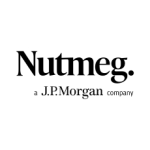Investment Focus: Focus FTSE Quarterly Contingent Income Plan
Income investments are without doubt our most commonly requested investment plan, whether by investors looking to use their ISA allowance, or income seekers simply adding to or transferring existing investments in the hunt for a high return and regular income. We therefore take a look at one of our most popular income plans, aimed at those looking for a high yield opportunity along with quarterly payments. Offering a potential 7% income along with some capital protection against a falling stock market, we expect the current issue of the Focus FTSE Quarterly Contingent Income Plan to be popular with both new and existing investors.
Income remains a top priority…
Income needs remain a top priority for both savers and investors, evidenced by the increasing number of our existing customers and those new to Fair Investment looking for income opportunities. Income is without doubt the most common demand put on our capital and as the need commonly increases the older we get and we start to reduce our working hours or look towards retirement, so the challenging task of finding a competitive income solution becomes increasingly important.
As we continue to face income pressure from sustained low interest rates and with uncertainty around the impact the recent volatility in the FTSE may have on future dividends, the hunt for high yield opportunities increases. This is where the balance of risk versus reward on offer from this plan is certainly worthy of consideration, and is one particular option that is proving popular with our income seekers.
In a nutshell
The FTSE Quarterly Contingent Income Plan from Focus (Credit Suisse acting as counterparty – see below) offers investors an annual income of up to 7.0% with quarterly income payments, and has a maximum fixed term of six years, although it could also mature early or ‘kick out’ at the end of each quarter from the end of year 2 onwards.
Your capital is returned if the plan does mature early, or at the end of the term provided the FTSE 100 Index has not fallen by more than 40% from its value at the start of the plan. This is known as conditional capital protection and is one of the plan’s main differentiators when compared to UK equity income or other investment funds. If it has fallen below this level, your initial capital is reduced by 1% for each 1% fall in the Index, so you could lose some or all of your initial investment.
Potential for up to 7.0% income
This issue of the plan has already proved popular since its launch and one of the reasons is the potential headline yield of 7.0%, the highest we have seen for this investment for some time. For each quarter the FTSE ends above 75% of its value at the start of the plan, a 1.75% income payment is paid for that quarter. If the FTSE has fallen below this 75% ‘barrier’ (i.e. it has fallen by more than 25%), no income will be paid for that quarter.
Therefore, should the FTSE remain above 75% at the end of each quarter the maximum annual income of 7.0% is achieved. This means that the investor knows exactly what needs to happen in order to provide the stated level income, when each income payment becomes due, as well as how long any income payments are payable for.
Quarterly payments
Another popular feature is the quarterly payment frequency since this provides a regular opportunity to receive an income payment. So not only does the investment provide the potential for a competitive level of income, but it also pays any such income payment on a quarterly basis which could be attractive to a number of investor scenarios.
Fixed term, but also with the potential to ‘kick out’…
The FTSE Quarterly Contingent Income Plan has a maximum term of six years and although you do have the option to withdraw your money early, the plan is designed to be held for the full term and early withdrawal could result in you getting back less than you invested. The plan also has the ability to mature early or ‘kick out’, which will occur if the Index has gone up by 5% or more at the end of each quarter, from the end of year 2 onwards. If it does, a final income payment will be made along with a full return of your original capital, which may appeal to those who would like to re-consider their investment options should the FTSE rise.
Conditional capital protection
If the plan fails to mature early then your capital is returned in full unless the FTSE 100 Index has fallen by more than 40% from its starting value. This is known as conditional capital protection and offers investors some capital protection against a falling stock market. If the Index has fallen below this level then your original capital is reduced by 1% for each 1% fall. In this situation at least 40% of your initial investment would be lost so you should understand that your capital is at risk and that you could lose some or all of your investment.
Compared to investment funds
Although there are many attractive headline yields advertised by investment fund managers, particularly in the UK Equity Income sector, it is important to remember that as with the FTSE Quarterly Contingent Income Plan, these yields are not guaranteed and are subject to fluctuations. In addition, the treatment of your capital with investment funds is different to the investment plan since there is no conditional capital protection – your capital is fully at risk on a daily basis and can therefore go up as well as down.
This is an important difference since the income yield and any rise or fall to your original capital should always be considered together since both have an effect on your overall return. For example a 7% income yield on an investment fund is compelling in its own right but not so if it coincides with a 7% reduction in the value of your capital. However, remember that this can of course work in your favour if capital growth is positive.
Credit ratings and agencies
Unlike a fund, your investment is used to purchase securities issued by Credit Suisse, and so their ability to be able to meet their financial obligations is also an important consideration. This is known as credit risk and means that in the event of Credit Suisse becoming insolvent and going into liquidation, you could lose future returns and some or all of your initial investment. These investments are also not covered by the Financial Services Compensation Scheme for default alone.
One accepted method of determining credit worthiness of a company is to look at credit ratings issued and regularly reviewed by independent companies known as ratings agencies. Standard and Poor’s is a leading credit agency and as at 9th June 2015, Credit Suisse has been attributed a long term ‘A’ credit rating with a stable outlook. The ‘A’ rating denotes a strong capacity to meet its financial commitments but could be more susceptible to adverse economic conditions than companies in higher-rated categories, while the stable outlook indicates that the rating is not likely to change in the short to medium term (between 6 months and 2 years).
About Credit Suisse
Credit Suisse is one of the world’s leading financial services providers operating in over 50 countries. Founded in 1856, they now serve around 2.1 million clients around the world, operating as an integrated bank with business split between two divisions: Private Banking & Wealth Management and Investment banking. They are also one of the largest global asset management businesses, with assets under management of almost £880 billion (as at the end of September 2015). They employ around 48,100 people in more than 122 offices around the world.
Risk v reward
The principle of risk versus reward means that the search for potentially higher returns leads to the need to put your capital at risk. A good benchmark for assessing your investment is to compare what you could get from a fixed rate deposit over a similar timeframe and then consider whether you are comfortable with the risk to capital you are taking in order to receive the opportunity for a higher return (since this investment does not include the same security of capital as a deposit account).
Anything around 3.0% to 3.1% is currently available on longer term fixed rate bonds with considerably lower rates on offer for fixed rate Cash ISAs. Therefore by accepting risk to your capital you have the potential to at least double the income on offer. Remember this plan also has the potential to mature early each quarter from the end of year 2 onwards. One of the key considerations therefore is to decide whether you are comfortable with putting your capital at risk in conjunction with the conditional capital protection on offer, in return for a potentially higher level of income.
Fair Investment conclusion
When considering income investments, it is important to fully understand how each works and the risks that one takes on. Whether this is inflation risk, risk of capital loss or fluctuating yields, it should always be remember that it is the income and capital loss/rise combined that effect your overall return.
Commenting on the plan, head of savings and investments at Fair Investment Company, Oliver Roylance-Smith said: “It’s has been a while since we’ve been able to talk about the potential for up to 7.0% income from a plan based on the performance of the FTSE, and compared to other income alternatives available in the market, this plan could offer a compelling option.”
He continued: “The headline yield is attractive and the cap on any income is balanced against the conditional capital protection thereby offering an attractive balance of risk v reward. By offering 7.0% income even if the FTSE falls up to 25%, we expect this plan to be popular so you may need to act quickly if you want to invest in this latest issue.”
The plan is open for New ISA investments up to the £15,240 allowance for the current tax year (2015/16), Cash ISA and Stocks & Shares ISA transfers, as well as non-ISA investments. The minimum investment is £5,000.
Click here to find out more about the Focus FTSE Quarterly Contingent Income Plan »
No news, feature article or comment should be seen as a personal recommendation to invest. Prior to making any decision to invest, you should ensure that you are familiar with the risks associated with a particular investment. If you are at all unsure of the suitability of a particular investment, both in respect of its objectives and its risk profile, you should seek independent financial advice.
Tax treatment of ISAs depends on your individual circumstances and legislation which are subject to change in the future. ISA transfer charges may apply, please check with your provider.
This is a structured investment plan that is not capital protected and is not covered by the Financial Services Compensation Scheme (FSCS) for default alone. There is a risk of losing some or all of your initial investment. There is a risk that the company backing the plan or any company associated with the plan may be unable to repay your initial investment and any returns stated. In addition, you may not get back the full amount of your initial investment if the plan is not held for the full term. The past performance of the FTSE 100 Index is not a guide to its future performance. This investment does not include the same security of capital as a deposit account.
Tags





